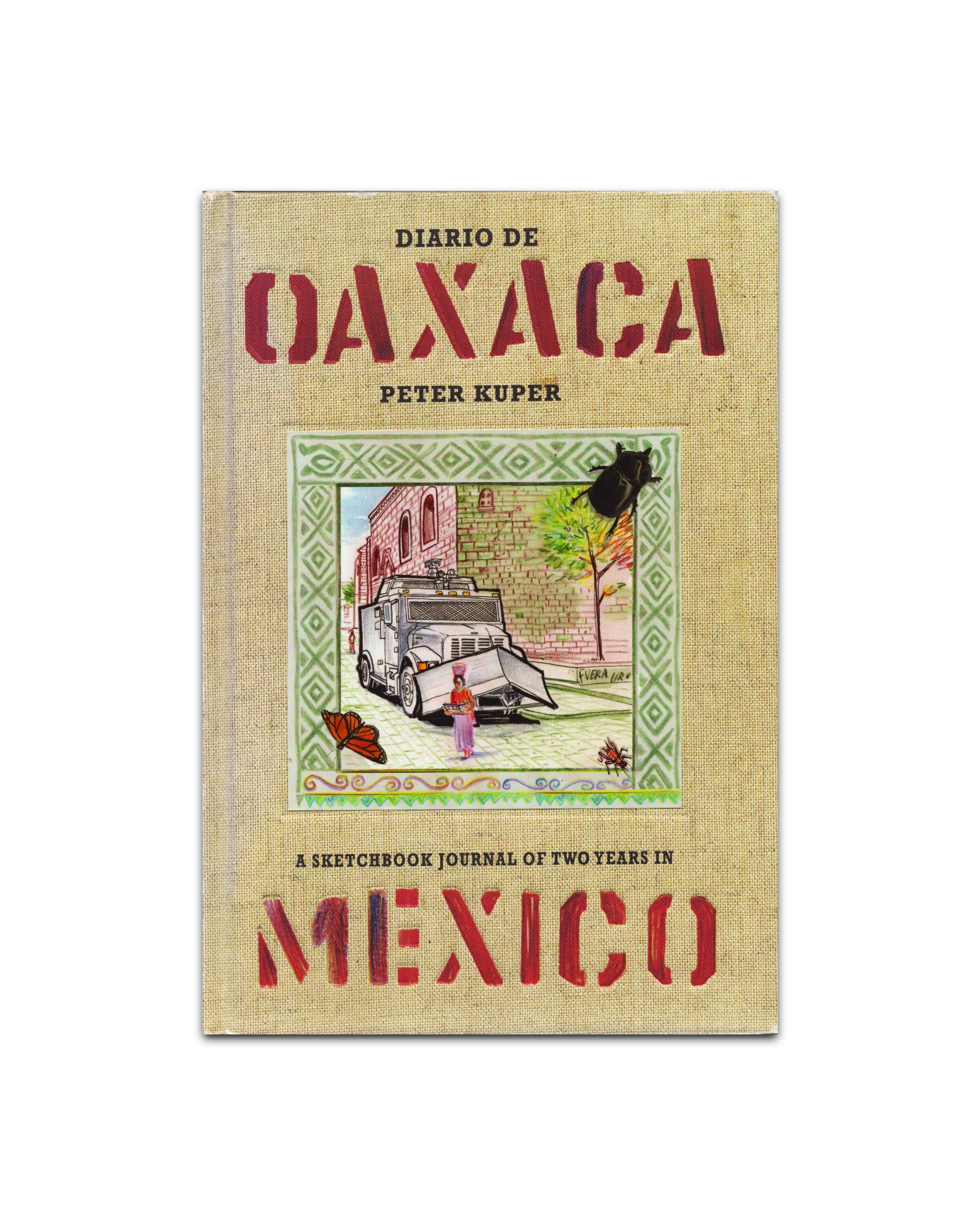LADY GUN STICKER
inspired by Oaxacan street art
During a trip in July 2015 we noticed a wide range of political art all over Oaxaca,
mirroring the people’s awareness and multi-layered readiness to respond to injustice.
This article mentions the original artwork that inspired these stickers,
along with more context on the street art culture in Oaxaca, Mexico.
* * *
A closer look …
There’s a rich history in Oaxaca demonstrating the passion behind the people’s movements toward socio-political justice. Shortly before the trip in 2015, synchronicity had a book find me while wondering through a cute thrift bookstore in San Francisco, California. In Diario de Oaxaca, Peter Kuper details the political climate he witnessed back in 2006:
“Since May, the teachers of Oaxaca (pronounced wah-HA-ka) have been encamped in the town square (Zocalo). This strike has been an annual event for the last twenty-five years and usually lasted a couple of weeks or until their demands for pay raises and funds for schools were met. For the first time in the strike’s history, the new governor, Ulises Ruiz Ortiz (URO), decided not to agree to their demands. Instead, on June 14th at 4:30 a.m., he sent in riot police in an attempt to forcibly expel them.
This attack completely backfired. Not only were the strikers not evicted, their demands and numbers expanded. They were joined by a larger coalition of unions, the APPO (Asemblea Popular de los Pueblos de Oaxaca) who declared the strike would not end unless governor Ulises stepped down.
Since then, tensions rose and fell with periodic police actions against strikers, but they didn’t budge.
After more than 5 months of unrest, the xit hit the fan. On Friday, October 27th the governor’s thugs attacked strikers, killing 3 teachers and an American journalist. This pressured Mexico’s president into ordering federal troops into Oaxaca the next day.
The Policia Federal Preventiva (PFP), as the federal troops are called, attacked the strikers and took over the Zocalo. As of this writing the Zocalo is no longer an encampment of teachers, but has been replaced by an encampment of military forces. The governor is refusing to leave office, even as pressure mounts from all sides, including from his own party.”
Upon arriving in July 2015, we did see a milder version of teachers protesting. The police rode atop armored vehicles holding their weapons close. So these annual teacher strikes continued on during the years, speaking to the tenacity and will of the people.
Students filled us in on what exactly was going on. Without having to ask we were told about the violent attacks on students and teachers by police. A graffiti tag read No somos todos faltan 43 and we inquired about its meaning, relating it to what were were being told.
On September 26, 2014 a group of students from Ayotzinapa Rural Normal School gathered for a bus trip to Mexico City for the annual protest on October 2nd (which marked the anniversary of the 1968 massacre of unarmed students in Tlateloco). On their way back to Ayotzinapa students were ambushed by policemen, some being shot and killed on the scene. 43 of the students were “arrested” and never heard from again. More details can be found in this article.
No somos todos faltan means “We are not all missing.” The people of Mexico have a no-nonsense approach when it comes to dismantling the injustices dished out by municipal occupation. They continuously and effectively push for the rights of marginalized people to be exercised freely.
A connection can be made here with all of the people in the North, Central and South parts of America (and globally, really). We go through many of the same issues worldwide. Knowing who and how we truly are will orient us into a better position to lead the lives we dream of and know we deserve.
No somos todos faltan 43, © 2015 PURPOSE.
Diario de Oaxaca, Peter Kuper





